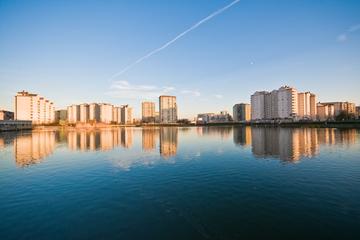Praga
TIME : 2016/2/22 13:49:09

Praga
Praga is Warsaw’s right-bank area that was once an independent town, from the time of its first mention in 1432. In the late 18th century, it became formally associated with Warsaw as a small settlement. In its early days as a suburb, many buildings were repeatedly destroyed by natural disasters and military battles; the only surviving historical monument from that time is the Church of Our Lady of Loreto.
Although it suffered repeated damage in its early days, Praga managed to resist WWII destruction, and today, it’s considered one of Warsaw’s trendiest neighborhoods, oozing a cool bohemian vibe. Post-industrial buildings have been converted into art galleries, cinemas, and pubs. Also look for pre-war elements like sidewalks, apartments and lampposts.
Praga is quite a departure from the well-traveled tourist spots in Warsaw proper. Its popularity is on the rise, so now is the best time to visit. Don’t miss historic monuments like Agnieszka Osiecka, ode to the Polish poet and journalist who authored over 2,000 songs; Kapela Podwórkowa, a tribute to pre-war cloth-capped buskers and musicians known as The Courtyard Band; and Monument of Kościuszko Division (Pomnik Kościuszkowców), a tribute to the 1st Tadeusz Kościuszko Infantry Division, who tried to help during the Warsaw Uprising in 1944.
Practical Info
Wilenski square is the transportation hub in Praga and is just a short walk from the Slasko Dabrowski Bridge across the Vistula River.
